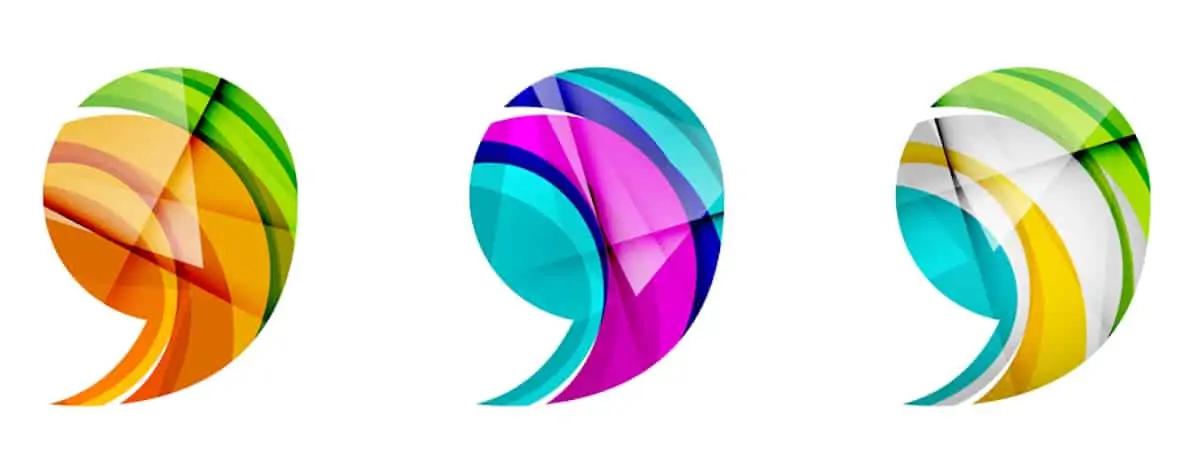Blog
Did you know that some commas could be more “important” than others? Ok, that’s not strictly true. A properly placed comma is usually essential for conveying exact meaning in anything you write.
However, certain commas leave a glaring error when left out. The four commas listed below are the kind that, when omitted, reduce not only the clarity but the credibility of your writing. That’s something you don’t want to mess with at school or in the real world!
 After an Introductory Phrase
After an Introductory Phrase
It’s all about clauses. You see, a complete sentence has what we call an independent clause. This clause has both a subject and a verb. You add variety to your writing when you start adding dependent clauses to these independent ones—phrases that lack either a subject or a verb. You can add a dependent clause to an independent clause using commas.
The introductory phrase is one such dependent clause. It is added to an independent clause and joined to it with a comma. Introductory phrases are special in that they are always at the beginning of the sentence.
Example:
Although the cat ran fast, I ran faster and caught him.
You can easily identify the introductory phrase here–it starts off the sentence. You may also notice a particular part of speech at the beginning of the phrase: a preposition (“although”). You see, introductory phrases can be spotted because of their prepositions. Pretty much any time you start off a sentence with a preposition, you know you have an introductory phrase.
But how do you know where to place the comma? That part is usually easy to spot: the comma comes right in front of the main subject. In the example above, “I” is the main subject; therefore, the comma joining the introductory phrase to the independent clause appears there.
Note: Introductory phrases can also start with gerunds, -ing words like “being,” “seeing,” and so on.
Example:
Being a recluse, Jenny studied by herself in the dorm.
 Surrounding Non-Essential Clauses
Surrounding Non-Essential Clauses
Another type of comma that joins dependent clauses to independent clauses is the non-essential (also called nonrestrictive) clause. This is the phrase that you insert into a sentence to add some nice thoughts, but is not necessary for the meaning of the sentence. For example, an appositive is a type of nonessential clause. An appositive re-names the noun, so it adds information but is not necessary. Therefore the appositive is always surrounded by commas.
Example of Appositive:
The most accomplished violinist in the class, Jane Doe, got first chair after tryouts last week.
Since there can only be one “most accomplished violinist,” Jane Doe’s name is just extra information and is therefore surrounded by commas.
But of course, a nonessential clause doesn’t have to be an appositive. Any phrase inserted into a sentence that isn’t necessary needs to be surrounded by commas.
Example of Non-essential Clause:
My cat, who is eight years old, died last week.
Do you see how we didn’t need to know how old the cat was to know that it died last week? It’s nice to know how old the cat was, of course, but because it’s not necessary, it’s nonessential. Thus it needs both commas.
 Before a Coordinating Conjunction
Before a Coordinating Conjunction
One of the other more important commas in the writing world is the comma that accompanies the coordinating conjunction. What is a coordinating conjunction, you ask?
I like to remind students of the acronym most of us learned in grade school: FANBOYS. This stands for:
- For
- And
- Nor
- But
- Or
- Yet
- So
Whenever one of these words is used to combine two independent clauses, a comma needs to appear just in front of the conjunction. You might combine independent clauses when you want to add variety to your writing by having longer sentences, or because the information is so similar in two sentences that combining them only makes sense.
Example:
I went to the swimming pool, and the kids were so rowdy that I left early.
You can tell that this is two independent clauses because they can be sentences on their own: “I went to the swimming pool” and “The kids were so rowdy that I left.” Joining them together makes the writing flow better.
It is easy to forget this comma, but it is important so that your sentences don’t become extremely long and encumbered.
 After Items in a Series
After Items in a Series
Another important comma is the one we use between items in a series. When you have a list of three or more things, leaving out the comma adds a lot of confusion. Let’s look at an example so you see how confusing the absence of this comma can be:
Example:
When I went camping, I gathered my tent my flashlight my sleeping bag and some food.
Do you see how these items look like they all combine into one object? If nothing else, this list looks unorganized and choppy without some punctuation. Let’s look at the correction.
Corrected Example:
When I went camping, I gathered my tent, my flashlight, my sleeping bag, and some food.
Now our list looks organized and it is easy to tell one object from the next. As you can see, commas in a series are quite necessary.
Note: The final comma in a list, often called the serial comma or Oxford comma, is not always required. This comma is the last one in the list, the one right in front of the coordinating conjunction (usually “and”). The use of this comma is usually up to the style being used, and in the professional world, the most common place for the serial comma to be omitted is newspapers. In the academic world, the serial comma is usually required.
 Where is Your Missing Comma?
Where is Your Missing Comma?
This is by no means an exhaustive list of commas; after all, the title of this article is “Quick Guide on the Most Important Commas.” While you might have a different opinion about which commas are the most important, I find knowing these heavy hitters helps students the most.
Now that you’ve read a little bit about these major commas, take a look at an essay you’ve written recently and see if you can’t find a few places where a comma might be needed. You might be surprised to see you know commas better than you realized!





